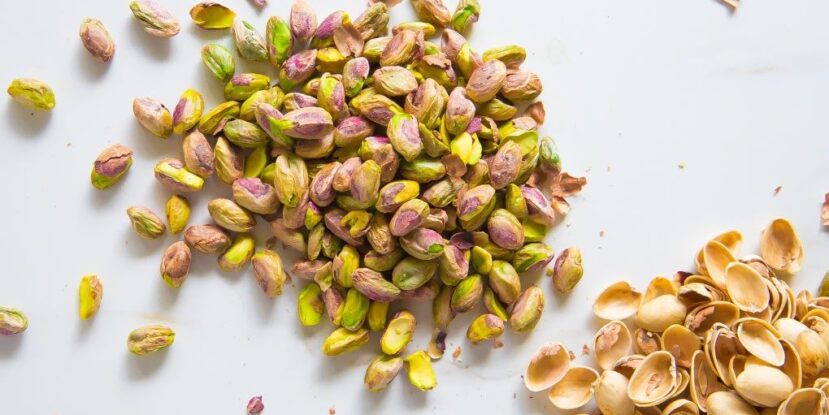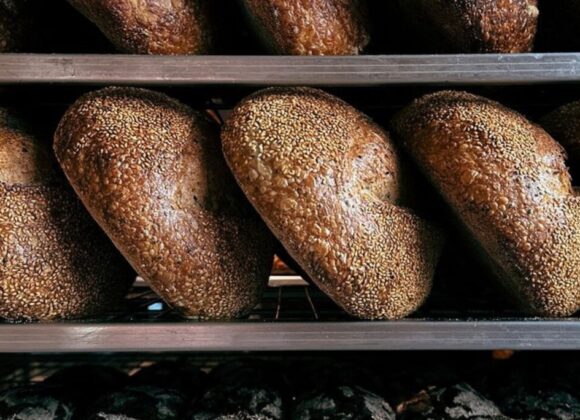Produkty uboczne otrzymywane podczas produkcji i przetwarzania żywności są nieuniknione, a ich utylizacja stanowi jedno z głównych wyzwań. Bioodpady mogą stanowić poważne zagrożenie społeczno-ekonomiczne oraz zagrożenie dla środowiska. Jeśli pozostałości nie zostaną odpowiednio zagospodarowane mogą uwolnić toksyczne zanieczyszczenia. Tym samym stać się poważnym zagrożeniem ekologicznym. Jednakże wykazano, że bioodpady mogą być źródłem związków bioaktywnych, np. mogą być źródłem błonnika pokarmowego, białek, tłuszczu czy mikroelementów. Co więcej odpady te mogą mieć właściwości prebiotyczne i przeciwutleniające.
Obecnie badane są innowacyjne rozwiązania wykorzystania bioodpadów do produkcji opakowań do żywności. „Nowe” opakowania powinny być otrzymywane z materiałów, które charakteryzują się jadalnością i/lub biodegradowalnością. Jadalne opakowania powinny być wykonane ze składników dopuszczonych do kontaktu z żywnością, posiadać cechy funkcjonalne, bioaktywne (np. antybakteryjne, bakteriostatyczne, przeciwutleniające), fizyczne i mechaniczne (np. wytrzymałość). Zmiana koncepcji w zakresie produkcji i konsumpcji żywności jest kluczowa dla zmniejszenia niedożywienia na świecie i uniknięcia załamania się środowiska. Agenda Organizacji Narodów Zjednoczonych na rzecz Zrównoważonego Rozwoju 2030 i Europejski Zielony Ład zachęcają i wspierają przedsiębiorstwa w produkcji żywności i opakowań do żywności w sposób zrównoważony, chroniący dobro środowiska.
Produkty uboczne pochodzenia roślinnego
Podczas przetwarzania zbóż otrzymuje się duże ilości produktów ubocznych, takich jak: otręby, młóto piwowarskie, łuski. Produkty te często wykorzystywane są jako pasza dla zwierząt. Są one bogate w związki bioaktywne. Zawierają białka, tłuszcze, składniki mineralne, witaminy, polifenole, błonnik pokarmowy, w tym hemicelulozę, celulozę, ligniny. Niekiedy otręby zbożowe wykorzystywane są do projektowania produktów zbożowych o zwiększonej zawartości błonnika pokarmowego. Jednakże ich wykorzystanie jest ograniczone, ponieważ akceptowalność sensoryczna tych produktów jest nie zawsze pozytywnie odbierana przez konsumentów. Przetwarzanie warzyw i owoców na soki, wina, dżemy generuje znaczą ilość pozostałości w postaci wytłoków, pulpy, skórek, nasion. Produkty te bogate są w biopolimery, takie jak skrobia, celuloza, pektyna. Przetwarzanie winogron na wino generuje rocznie około 5-9 milionów ton odpadów. Stwierdzono, że skórki owoców zawierają o ponad 15% więcej polifenoli niż miąższ owoców. Odpady owocowo-warzywne mają duży potencjał zastosowania do przygotowania opakowań jadalnych. Ponadto opakowania te mogą stanowić wartość dodaną, ze względu na właściwości biologiczne odpadów owocowo-warzywnych, a mianowicie błonnik pokarmowy, przeciwutleniacze, olejki eteryczne.
Produkty uboczne pochodzenia zwierzęcego
W przemyśle mleczarskim powstaje dużo odpadów białkowych, w szczególności serwatki i kazeiny. Pozostałości te mają wysoką wartość odżywczą i w zakładach z zaawansowaną technologią przekształcane są np. na koncentraty białkowe, izolaty białka. Jednakże szacuje się, że około 50% serwatki produkowanej na świecie jest uznawane jako odpad, bez dalszego zastosowania. Białka mleka charakteryzują się dobrymi właściwościami barierowymi. Żelatyna, która otrzymywana jest ze skóry, kości zwierząt wykazuje właściwości żelujące, stabilizujące, zagęszczające. Żelatyna jest ważnym biopolimerem stosowanym w opakowaniach do żywności. Wykazuje dobre właściwości barierowe, jednakże ze względu na jej higroskopijny charakter preferowane są połączenia z innymi biopolimerami w celu poprawy właściwości funkcjonalnych opakowań. Żelatynę można również otrzymać z ryb. Odpady ryb stanowią na ogół 25-50 % surowca, który można wykorzystać nie tylko do produkcji żelatyny, ale również do produkcji proszków białkowych czy nutraceutyków.
Tabela 1. Biomateriały z ubocznych produktów, które można zastosować w projektowaniu opakowań jadalnych.
| Pochodzenie produktu ubocznego | Produkt uboczny | Biopolimery* |
| Skorupiaki | muszle | chityna |
| Ryby | skóra, płetwy, łuski, wnętrzności | białka miofibrylarne, kolagen, żelatyna |
| Algi | biomasa pozostała po ekstrakcji związków | alginiany. agar, karageny |
| Mięso | skóra, krew, kości, tkanka tłuszczowa, skrawki mięsa | żelatyna, kolagen |
| Mleko | płyn poprodukcyjny | kazeina, serwatka |
| Warzywa i owoce | miąższ, skórki, nasiona, wytłoki | pektyna, skrobia, celuloza |
| Przetwory zbożowe | otręby, młóto, łuski | skrobia, lignina, celuloza, hemiceluloza |
*biopolimery – związki o właściwościach filmogennych, stanowią podstawę jadalnych powłok
Źródło: opracowanie własne na podstawie Hamed i wsp., 2021
Zastosowanie opakowań otrzymanych z produktów ubocznych
Rozwój naturalnych materiałów opakowaniowych może pomóc osiągnąć zrównoważony rozwój i wpierać recykling w sektorze spożywczym. Wykorzystując opakowania „naturalne” można zachować określony termin przydatności do spożycia, poprawić cechy sensoryczne i funkcjonalne. Dodając do opakowań olejki eteryczne i ekstrakty roślinne zwiększa się trwałość mikrobiologiczną i zwiększa potencjał antyoksydacyjny. Jednym z rodzajów opakowań otrzymywanych z produktów ubocznych są powłoki jadalne. Są to cienkie warstwy materiałów jadalnych, które nanosi się w postaci cieczy o różnej lepkości na powierzchnię lub pomiędzy warstwami produktu poprzez natryskiwanie, zanurzanie lub szczotkowanie. Następnie pozostawia się je do wyschnięcia na produkcie. Jadalne powłoki poprawiają barierę dla wilgoci, gazów oraz chronią produkt przed uszkodzeniami mechanicznymi i zanieczyszczeniami mikrobiologicznymi, chemicznymi. W tabeli nr 1 przedstawiono przykładowe biomateriały z ubocznych produktów pochodzenia roślinnego i zwierzęcego, które mogą mieć zastosowanie w projektowaniu nowych rozwiązań opakowaniowych, np. tworzenia powłok jadalnych.
W literaturze naukowej opisano zastosowanie powłoki z żelatyny do przechowywania filetów z pstrąga tęczowego, powłoki kukurydzianej do powlekania orzeszków ziemnych, powłoki alginiano-pektynowej do przedłużenia trwałości owoców mango. W badaniach naukowych udowodniono, że powłoka chitosanowa otrzymywana z odpadów krewetek wykazuje wyższą aktywność przeciwdrobnoustrojową, niż dostępny na rynku chitosan. Ponadto może wydłużyć okres przydatności do spożycia do 10 dni w przypadku niektórych owoców. Powłoki z serwatki z dodatkiem ekstraktu szałwii zwiększają stabilność oksydacyjną produktu. Powłoki białkowe z ryb z dodatkiem katechiny wykazują hamowanie wzrostu drobnoustrojów oraz poprawiają właściwości organoleptyczne (w przypadku zastosowania do przechowywania tuńczyka błękitno płetwowego). Powłoka skrobiowo-chitosanowa z manioku może hamować utratę masy powlekanych produktów, np. pomidorów.
Na świecie proponuje się zrównoważone rozwiązania w zakresie opakowań do żywności. Firma Skipping Rocks Lab z Wielkiej Brytanii opracowała jadalny materiał z roślin i alg do pakowania napojów, wody i sosów (https://www.notpla.com). Francuska firma Lactips produkuje materiały opakowaniowe na bazie kazeiny (https://www.lactips.com). Firma Evoware z Indonezji zaprojektowała słomki do napojów otrzymywane z ryżu (https://rethink-plastic.com/home). Na rynku pojawiają się inne firmy z innowacyjnymi projektami. M.in. Apeel (https://www.apeel.com/), Semperfresh (https://www.agricoat.co.uk/industries/processors/semperfresh), Loliware (https://www.loliware.com), Biotrem (https://www.biotrem.pl), E6PR (https://e6pr.com), MarinaTex (https://www.marinatex.co.uk), Bioplastic Skin (https://valdissteinars.com/Bioplastic-Skin).
Podsumowanie
Produkcja żywności powoduje powstawanie dużych ilości produktów ubocznych, które znajdują zastosowanie w projektowaniu opakowań do żywności. Koncepcja otrzymywania naturalnych opakowań bazuje na resztkowej biomasie, która może przyczynić się do poprawy bezpieczeństwa żywnościowego i ochrony środowiska. Produkty uboczne stanowią łatwo dostępną, niedrogą i niewykorzystaną w 100% biomasę o potencjale wytwarzania tańszych i bezpieczniejszych dla środowiska opakowań, np. folii jadalnych. Aby w pełni wykorzystać koncepcję projektowania zrównoważonych systemów opakowań i tym samym osiągnięcia zrównoważonego rozwoju i obiegu zamkniętego w gospodarce żywnościowej należy zapewnić skuteczną infrastrukturę odzysku produktów ubocznych oraz zwiększyć świadomość społeczeństwa.
Bibliografia:
- Dilucia, F., Lacivita, V., Conte, A., & Nobile, M. A. D. (2020). Sustainable use of fruit and vegetable by-products to enhance food packaging performance. Foods, 9(7), 857.
- Faustino, M., Veiga, M., Sousa, P., Costa, E. M., Silva, S., & Pintado, M. (2019). Agro-food byproducts as a new source of natural food additives. Molecules, 24(6), 1056.
- Fierascu, R. C., Sieniawska, E., Ortan, A., Fierascu, I., & Xiao, J. (2020). Fruits by-products—A source of valuable active principles. A short review. Frontiers in Bioengineering and Biotechnology, 8, 319.
- Guil-Guerrero, J. L., Ramos, L., Moreno, C., Zúñiga Paredes, J. C., Carlosama-Yepez, M., & Ruales, P. (2016). Antimicrobial activity of plant-food by-products: A review focusing on the tropics. Livestock Science, 189, 32–49.
- Hamed, I., Jakobsen, A. N., & Lerfall, J. (2022). Sustainable edible packaging systems based on active compounds from food processing byproducts: A review. Comprehensive Reviews in Food Science and Food Safety, 21(1), 198-226.
- Leandro, A., Pacheco, D., Cotas, J., Marques, J. C., Pereira, L., & Gonçalves, A. M. (2020). Seaweed’s bioactive candidate compounds to food industry and global food security. Life, 10(8), 140.
- Martiny, T. R., Pacheco, B. S., Pereira, C. M., Mansilla, A., Astorga-España, M. S., Dotto, G. L., Moraes, C. C., & Rosa, G. S. (2020). A novel biodegradable film based on κ-carrageenan activated with olive leaves extract. Food Science & Nutrition, 8, 3147–3156.
- Mazorra-Manzano, M. A., Robles-Porchas, G. R., González-Velázquez, D. A., Torres-Llanez, M. J., Martínez-Porchas, M., García-Sifuentes, C. O., González-Córdova, A. F., & Vallejo-Córdoba, B. (2020). Cheese whey fermentation by its native microbiota: Proteolysis and bioactive peptides release with ACE-inhibitory activity. Fermentation, 6(1), 19
- Nawaz, A., Li, E., Irshad, S., Xiong, Z., Xiong, H., Shahbaz, H. M., & Siddique, F. (2020). Valorization of fisheries by-products: Challenges and technical concerns to food industry. Trends in Food Science & Technology, 99, 34–43.
- Sasidharan, A., & Venugopal, V. (2020). Proteins and co-products from seafood processing discards: Their recovery, functional properties and applications. Waste and Biomass Valorization, 11, 5647–5663
- Tan, Y. N., Lee, P. P., & Chen, W. N. (2020). Microbial extraction of chitin from seafood waste using sugars derived from fruit waste-stream. AMB Express, 10(1), 17.
- Toldrá, F., Mora, L., & Reig, M. (2016). New insights into meat by-product utilization. Meat Science, 120, 54–59
- Verni, M., Rizzello, C. G., & Coda, R. (2019). Fermentation biotechnology applied to cereal industry by-products: Nutritional and functional insights. Frontiers in Nutrition, 6, 42.










 Młodszy specjalista ds. komunikacji marketingowej i PR.
Młodszy specjalista ds. komunikacji marketingowej i PR.


 Absolwent Uniwersytetu Warszawskiego oraz Szkoły Głównej Gospodarstwa Wiejskiego. W branży HoReCa od ponad 10 lat. Przez lata związany z Grupą Trip, Sobienie Królewskie Golf and Country Club oraz restauracją Florentin w Warszawe.
Absolwent Uniwersytetu Warszawskiego oraz Szkoły Głównej Gospodarstwa Wiejskiego. W branży HoReCa od ponad 10 lat. Przez lata związany z Grupą Trip, Sobienie Królewskie Golf and Country Club oraz restauracją Florentin w Warszawe. Absolwentka Wydziału Architektury Politechniki Warszawskiej na kierunku Architecture for Society of Knowledge oraz Komunikacji Wizualnej na Politecnico di Milano. Specjalistka od budowania nastroju. Doświadczenie zdobywała w kraju i zagranicą podczas licznych warsztatów międzynarodowych (Sevilla, Lizbona, Florencja), stypendium na La Sapienza (Rzym) oraz pracując m.in. w Carmi e Ubertis i ADM Milano.
Absolwentka Wydziału Architektury Politechniki Warszawskiej na kierunku Architecture for Society of Knowledge oraz Komunikacji Wizualnej na Politecnico di Milano. Specjalistka od budowania nastroju. Doświadczenie zdobywała w kraju i zagranicą podczas licznych warsztatów międzynarodowych (Sevilla, Lizbona, Florencja), stypendium na La Sapienza (Rzym) oraz pracując m.in. w Carmi e Ubertis i ADM Milano.








 Menedżer z wieloletnim doświadczeniem w branżach kosmetycznej, spożywczej, dziecięcej. W trakcie swojej kariery związany z firmami takimi jak: L’Oreal, Samsung, Danone-Nutricia, Unilever. W ciągu swojego życia zawodowego odpowiadał między innymi za rozwój sprzedaży i contentu eCommerce w Polsce i krajach Europy Środkowo-Wschodniej.
Menedżer z wieloletnim doświadczeniem w branżach kosmetycznej, spożywczej, dziecięcej. W trakcie swojej kariery związany z firmami takimi jak: L’Oreal, Samsung, Danone-Nutricia, Unilever. W ciągu swojego życia zawodowego odpowiadał między innymi za rozwój sprzedaży i contentu eCommerce w Polsce i krajach Europy Środkowo-Wschodniej. 

























































